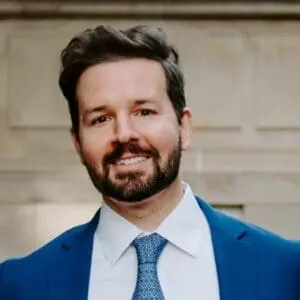In early May, Selma Yznaga was driving to work at a mental health clinic along the Texas–Mexico border when she received a frantic call from a colleague: “Have you seen what’s happening at the district courthouse? The building is packed. I can’t even get through the door. Everyone’s hysterical!” Yznaga hung up the phone and sped toward the small clinic where she’d spent almost two decades training counselors. Her job at one of only two mental health clinics in a community numbering more than 300,000 had never been predictable. But almost 1,300 miles away in Scottsdale, Arizona, something had happened two days earlier that had blindsided her staff and would dramatically shift the course of their work.
On that day, US Attorney General Jeff Sessions had made an announcement that under a new policy, the Justice Department would begin separating children from their parents if they crossed over illegally from the southwest border, taking deterrence to a new level. “If you are smuggling a child, then we will prosecute you, and that child will be separated from you as required by law,” Sessions told the crowd. “If you don’t like that, then don’t smuggle children over our border.”
Yznaga and her colleagues at the clinic are within walking distance of the heavily patrolled border and are used to dealing with shifting immigration policies. But what they witnessed at the courthouse that day—a scene an ACLU lawyer working with the clinic described as “sickening”—was unprecedented: crying family members shackled at the legs, hands, and waists; police reportedly confiscating business cards from pro-bono lawyers looking to assist the defendants, courtrooms packed to the brim, and judges with a logjam of cases struggling to carry out a policy many of them didn’t fully comprehend.
Of course, immigrants in America have long faced an uphill battle, and the few therapists who have chosen to work with them have been pushed to develop appropriate, culturally relevant strategies. But the shifting political landscape of the past year and a half, replete with policies and rhetoric that have proven psychologically destructive, not only to undocumented immigrants, but also to those with legal protections, has significantly increased the burden on these clinicians and their clients.
Take the Trump administration’s September 2017 decision to phase out the Deferred Action for Childhood Arrivals (DACA) program, which gave two-year deportation protection and work-permit eligibility to almost 800,000 immigrants brought to the US as children. A study published in the March 2017 issue of The Lancet, which surveyed almost 15,000 noncitizen, Latino adults between 2008 and 2015, found a direct correlation between legal protections offered by DACA and psychological well-being.
A study of 150 undocumented immigrants conducted in 2013 by Harvard professor Roberto Gonzales, described in a February 2018 Vox article, found that DACA beneficiaries were seeing “increased educational attainment, higher social mobility, and better mental health.” Those who didn’t have legal status, Gonzales notes, described symptoms including chronic headaches, ulcers, difficulty sleeping, eating disorders, and thoughts of suicide. Illegality, he wrote, became a “binding constraint that overwhelmed all other traits and achievements. It acted as a lead weight that eventually dragged them down.”
Unsurprisingly, clinicians who work with immigrant populations say they’ve been seeing higher levels of anxiety, depression, and suicide. In response, these therapists are emphasizing the need for down-to-earth, practical interventions to address problems faster and more directly than traditional approaches.
The Counseling and Training Clinic, where Yznaga works, includes a part-time staff of 20 graduate students, most from the University of Texas Rio Grande Valley. They assist with a wide range of challenges immigrants commonly face, including finding employment, housing, and childcare, as well as working through the loss of family, culture, and a sense of belonging. But more recently, these counselors have reported a huge spike in the need to address the physical and psychological effects of consistent fear.
“We’re seeing people forced to go back into the shadows,” she says, adding that there’s anger and indignation from some about having been asked to provide personal information on the DACA application that could now be used against them. Many clients, including those with temporary protections, worry that deportation could come at any moment. They’ve heard stories about workplace raids by Immigration and Customs Enforcement (ICE) and police breaking down doors in the middle of the night. “We’re seeing a lot of hypervigilance and fear of the unknown,” Yznaga says—emotions punctuated by sleeplessness, low appetite, headaches, and trouble concentrating.
Regardless of their legal status, getting immigrant populations into a mental health clinic can be a tall order. Many simply don’t have a clear understanding of what counseling entails. Consider, for instance, that the Spanish word for counselor means “advice giver,” Yznaga says. Clients expect that they’re going to get advice about a problem and that therapy will be a quick process. Instead, intake assessments, goal-setting, and interventions are often unfamiliar experiences, which accounts for a high dropout rate. In many Latin American countries, Yznaga adds, mental health counseling is a rarity, and seeking treatment invites social stigma.
The clinic where Yznaga works usually limits treatment to eight sessions, which focus on practical needs like helping clients fill out immigration paperwork, brush up on their rights in case immigration officials question them, and create emergency plans, including connecting with relatives should the worst happen and they get deported. But often, Yznaga says, clients are still skeptical about the safety of seeking help from them.
Fred Bemak, a counseling professor at the University of Massachusetts Amherst and founder of Counselors Without Borders, which provides assistance to immigrant communities affected by natural disasters, has spent more than 20 years training clinicians to tackle immigrant-specific issues. He says this level of hypervigilance is completely normal, given today’s political climate. “Most of us can’t even fathom being 15, or 55 for that matter, seeing a police car coming down the road, and thinking, I wonder if that’s for me. That’s terrifying stuff. Imagine being unable to walk out your door in the morning without feeling crippled by fear.” The best-case scenario for many immigrants, he says, is developing as much of a tolerance of this uncertainty as possible, “to learn to live with it as an everyday factor.”
Unfortunately, according to Bemak, the most common therapy models used with immigrants are insufficient on two levels: the one-on-one model is unheard of in many cultures, and most interventions tend to focus too narrowly on symptoms without considering the broader social and political context. “It’s not just a matter of saying, ‘It sounds like you’re anxious or depressed,’” he explains. “It’s a matter of looking at the symptoms and saying, ‘Let’s talk about what’s happening in the world around you that may be causing them.’”
But most immigrant clients are likely to be wary and suspicious when they step into your office for the first time, says Irmarie Rios, who’s spent five months working as a counselor at the Erie Family Health Center in Chicago, where she mostly treats undocumented families. Many clients view therapists as authority figures and will be initially reluctant to volunteer personal information that could be used against them, she says. Early on, they’ll probably talk about general anxiety, depression, and hypervigilance. Don’t probe too much, Rios advises; this is where your basic therapeutic training in listening and validating is necessary. Once you’ve created an atmosphere of safety and trust—another therapeutic cornerstone—you’re much likelier to hear how these issues might relate to their immigration status, she says.
Rios echoes Bemak’s statements about the importance of paying attention to context. A few months ago, she treated a young woman who was in the process of separating from her husband. The woman told Rios she was suffering from insomnia and anxiety. Rios’s instinct said the pending separation was causing these problems, but a few sessions later, after she’d asked when these symptoms had begun, the woman replied that they’d peaked around the time of a break-in at their neighbor’s apartment, after which the police had been called.
The woman then told Rios that her children had applied for DACA protection shortly before Trump’s election. When the police arrived, she began to worry that they might somehow find out about her children’s precarious legal status and return later to deport them. After making the connection between the police visit and the woman’s symptoms, Rios was able to help her take practical steps toward managing her fears, including creating an emergency plan that listed family members she could contact and lawyers she could consult with if she or her children were detained. “The problems weren’t going away,” Rios said, “but creating a plan really helped her get back on her feet.” Once that was in place, she had more internal space to address other issues in her life.
To get to the root of problems a little faster with immigrant clients, Rios says that knowing about their journey to the US, cultural practices, and family connections can go a long way in building safety and trust. Practicing a little self-disclosure helps, too. As a Latina, Rios says she understands what her clients are going through because some of her family members have similar fears and anxieties. “When I share a little bit of my own story, my clients think, Yeah, she gets it,” she explains. When immigrants from family-centric cultures show up in her waiting room with relatives, Rios takes notice. “Sometimes clients show up with their abuela or tia,” she says. “If they want a relative to join them in a session, I welcome that conversation. For people who often experience disconnection here, it gives them a much-needed sense of control.”
By now, it’s become clear that the current administration’s immigration policies have significantly altered the experience of being an immigrant in America, regardless of status. Even in Rios’s progressive hometown of Chicago, she says anti-immigrant rhetoric and threats are common. About six months ago, a rumor spread in several immigrant-heavy neighborhoods near Rios’s office that local police were planning overnight raids with ICE. Within 24 hours, she says most locals were so scared to leave their homes that neighborhood streets and marketplaces were almost completely empty. “It sounds like science fiction,” she says. “But for too many people, this is a frightening reality.”
In the meantime, therapists on the front lines say they’re dedicated to creating a counternarrative to anti-immigrant policies. If they can’t reach clients in their offices, Yznaga says the Counseling and Training Clinic may soon conduct therapy sessions in jails—which would be a first for the organization. “I tell our clients all the time, there are armies of people here who are fighting for you,” she says. “They want you to be here. They welcome you. They need you.”
PHOTO © ISTOCK / MOFLES
Chris Lyford
Chris Lyford is the Senior Editor at Psychotherapy Networker. Previously, he was assistant director and editor of the The Atlantic Post, where he wrote and edited news pieces on the Middle East and Africa. He also formerly worked at The Washington Post, where he wrote local feature pieces for the Metro, Sports, and Style sections. Contact: clyford@psychnetworker.org.













